Quick Links:
Overview of Comet Group Paths
Approximately 95% of SOHO's comet discoveries belong to one of five comet groups (or 'families'). A comet group is is a collection of comets - at least three - that share very similar orbital properties but are in different places in that orbit. As an analogy, think of comets as being cars on a race track, and the track itself is their orbit. None of them are in the same location but they all follow the same route. For SOHO comet hunting, we can use this to our advantage!
The SOHO spacecraft is located at the L1 Lagrange point in space, which means it has very similar properties to Earth's orbit, and has a year that is the same length as Earth's year. The advantage here for comet hunting is that the comet groups observed by SOHO always appear at the same location in data on the same date every year. (The movies below will explain this better.) But what this means is that at any time of the year, we know where in the data most (but not all!) comets will be coming from and what direction they will move. As of September 2021, the groups breakdown for SOHO discoveries was as shown in the below table.
| Kreutz | Meyer | Marsden | Kracht | Kracht-II | Non-Group |
|---|---|---|---|---|---|
| 85.6% | 6.8% | 1.5% | 1.1% | 0.3% | 4.8% |
Non-group comets are objects that do not appear to belong to any known family or group. These are, by definition, entirely random and come from any direction at any time of year, and appear anywhere in the field of view. The other groups are much easier to predict, as shown in the following animations.
Annual Orbit Movies
We provide here a series of animations showing the orbital path of comet families in the LASCO C2 and C3 fields of view. In all of the below animations, the images are taken from 2002 but the specific year is unimportant because, as noted above, SOHO orbits the Sun at the same rate as Earth, so we always see the same field of view every 12 months. Thus the orbit paths shown here work for any year, e.g. the position of the orbit on 2002/09/02 would be in the same location on Sept 02 in 1997, 1998, 1999..., 2003,..., 2010,... 2020, or any other year! It should be noted that these images are for general guidance only, and there is always some amount of 'spread' around the nominal orbit for any given comet. That is, certain comets may appear slightly to one side or the other of the plotted orbits - they will not always perfectly follow the plotted lines (but it will be pretty close).
Kreutz Group
This animation shows one year of LASCO data, with C2 and C3 combined, with an overlay showing the orbit of the Kreutz group. Note that SOHO's Kreutz-group discoveries do not survive perihelion -- this means that we never see them on the "outbound" portion of their orbit. You can also download this movie as a 46Mb mp4 file. [Credit: Movie compiled by Brendan Gallagher (NRL).]
Meyer Group
This animation shows one year of LASCO data, with C2 and C3 combined, with an overlay showing the orbit of the Meyer group. You can also download this movie as a 46Mb mp4 file. [Credit: Movie compiled by Brendan Gallagher (NRL).]
Kracht Group
This animation shows one year of LASCO data, with C2 and C3 combined, with an overlay showing the orbit of the Kracht group. You can also download this movie as a 46Mb mp4 file. [Credit: Movie compiled by Brendan Gallagher (NRL).]
Marsden Group
This animation shows one year of LASCO data, with C2 and C3 combined, with an overlay showing the orbit of the Marsden group. You can also download this movie as a 46Mb mp4 file. [Credit: Movie compiled by Brendan Gallagher (NRL).]
Comet Track images
As an alternative to the above movies, we also provide the following "simulated field of view" images that show the tracks of the comets. Here, the tracks are much wider than as shown in the animations, highlighting the actual variation in orbits that we see within each comet family. That is, we can expect to see members of these groups somewhere within the regions indicated in any given month (they don't follow the perfect line shown in the animations above). These images were very kindly produced/supplied by Sungrzer Project contributor Robert Pickard.
LASCO C2 Kreutz-group
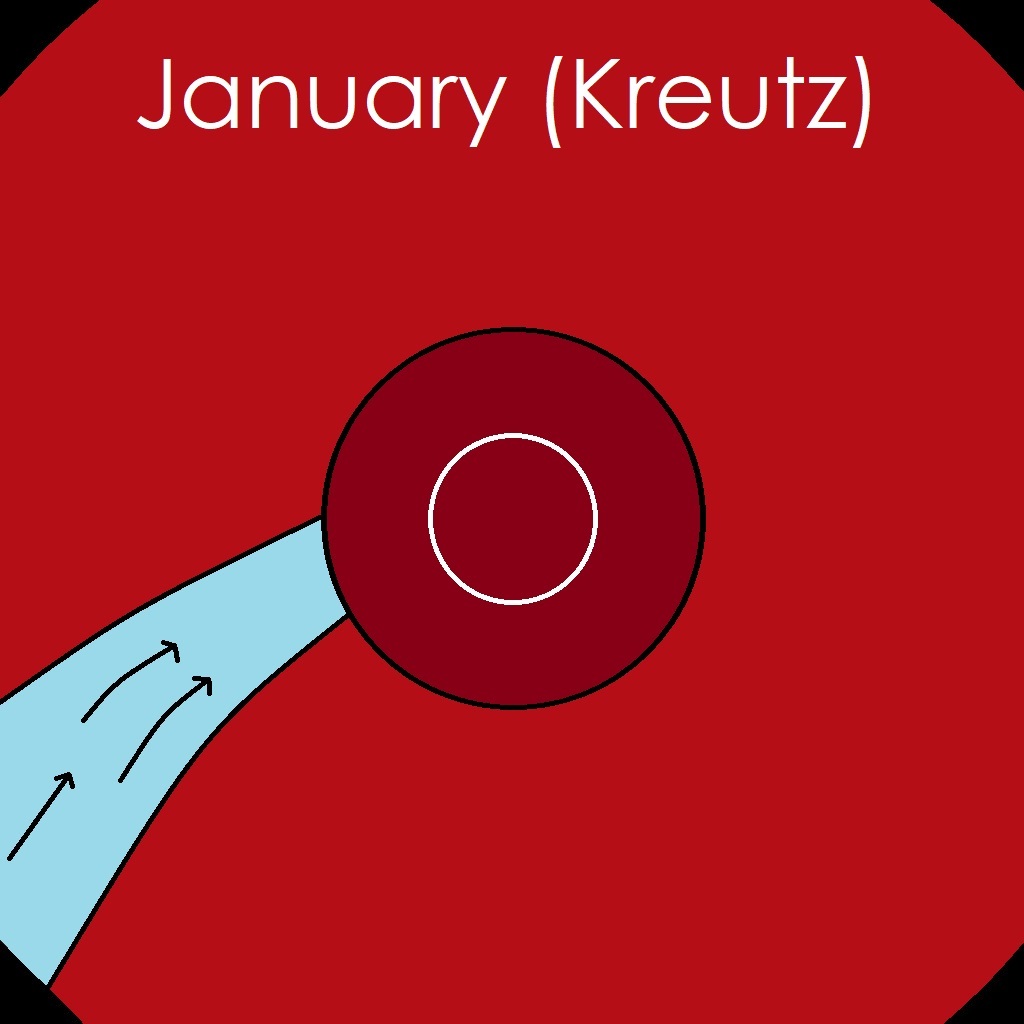 |
 |
 |
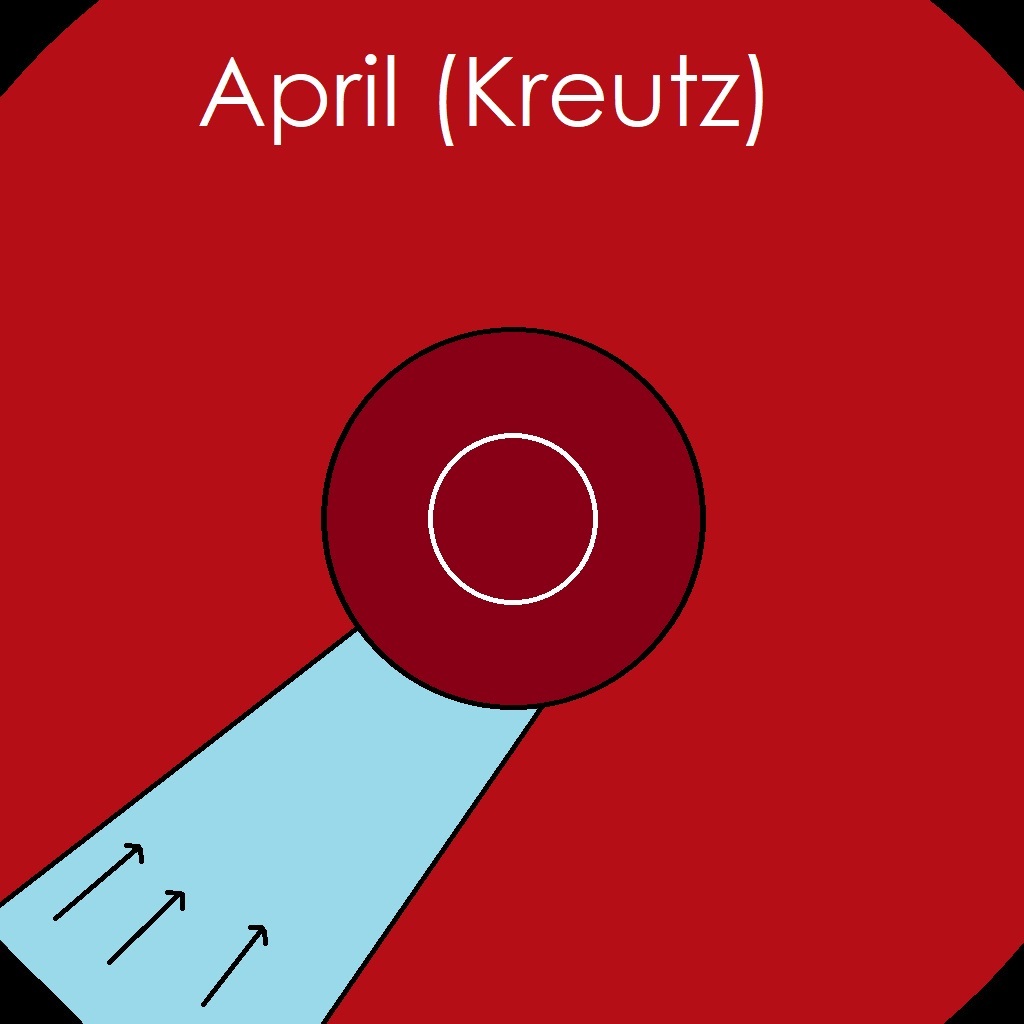 |
 |
 |
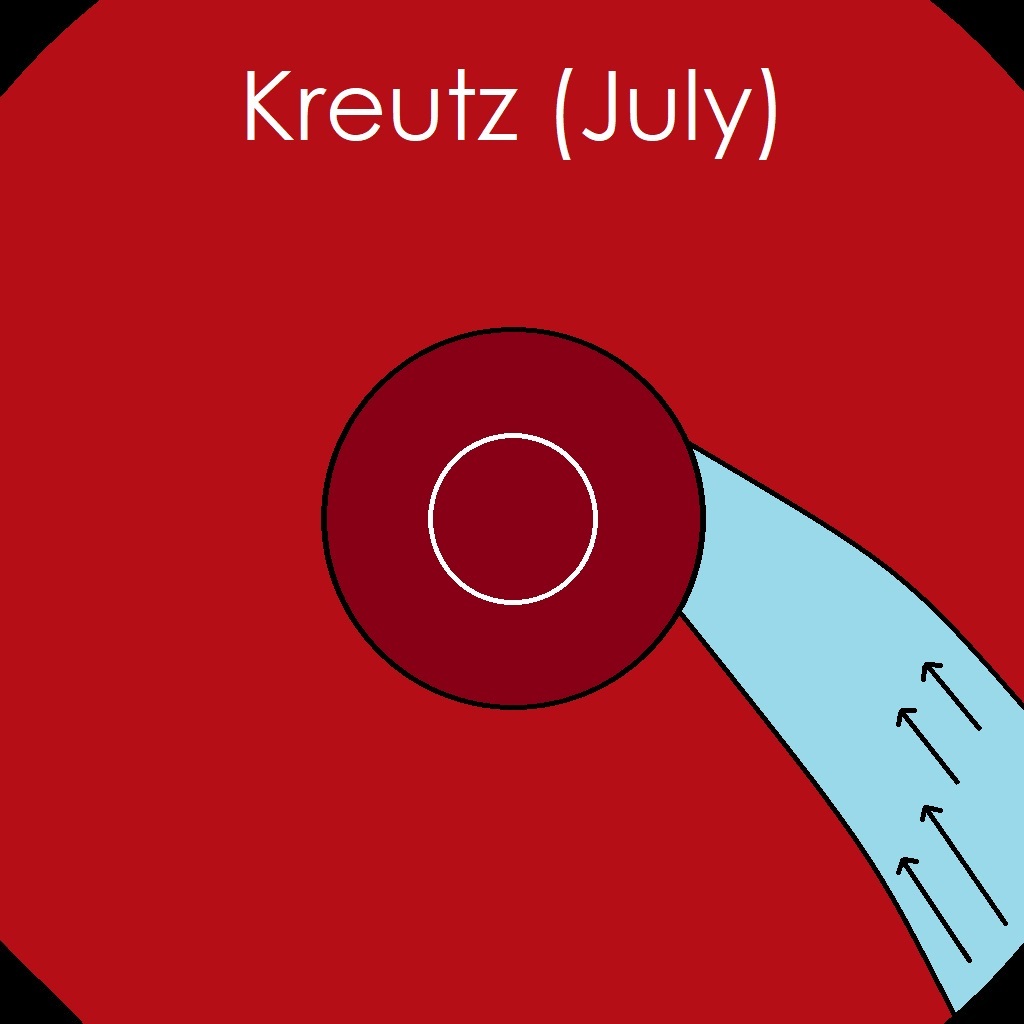 |
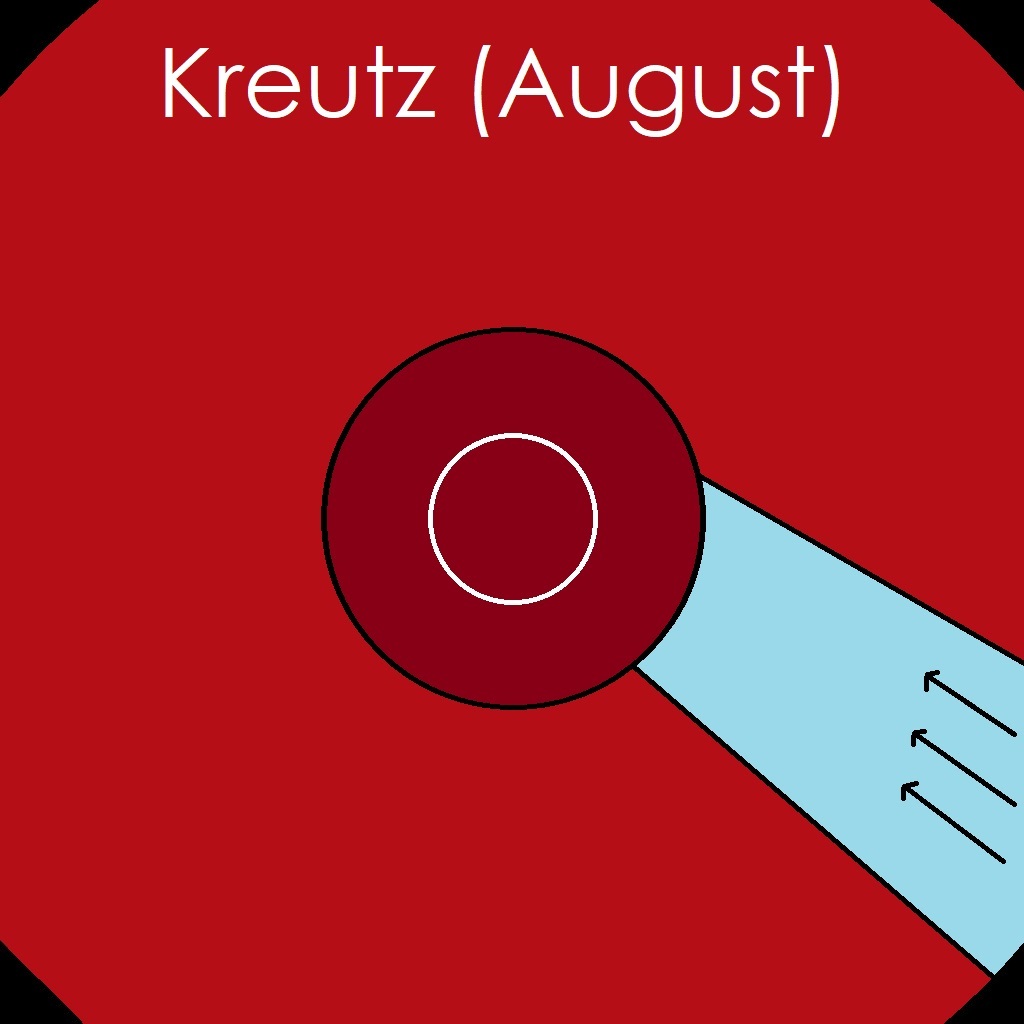 |
 |
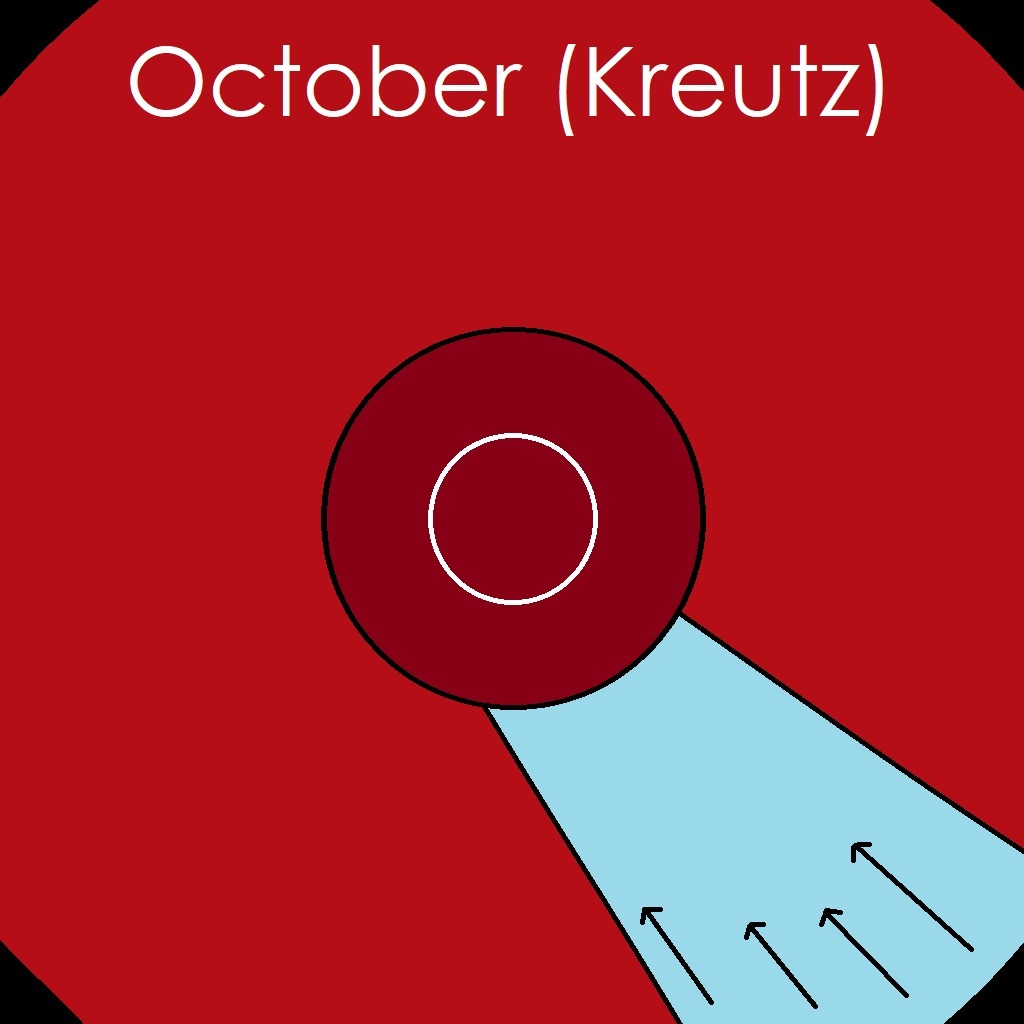 |
 |
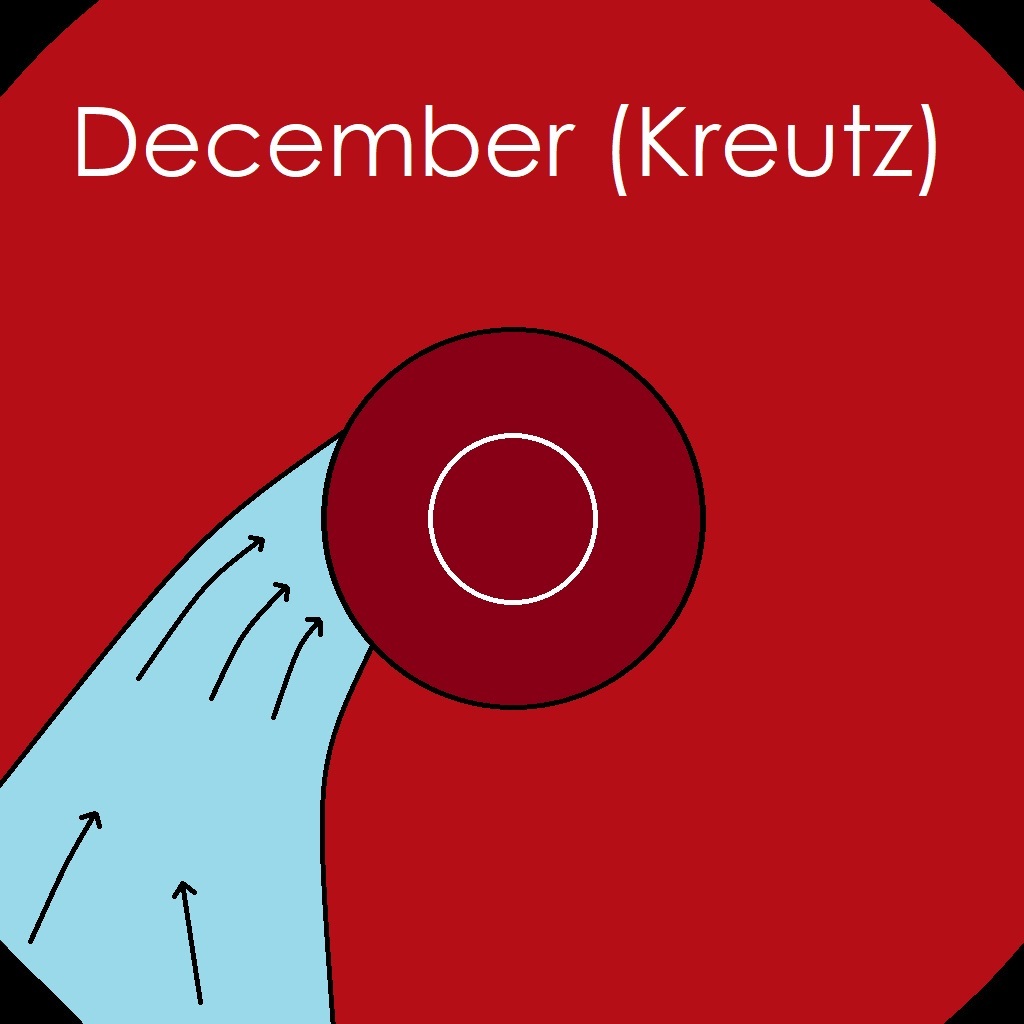 |
LASCO C3 Kreutz-group
 |
 |
 |
 |
 |
 |
 |
 |
 |
 |
 |
 |
Non-Kreutz LASCO C2 comet groups
LASCO C2 Meyer-group
 |
 |
 |
 |
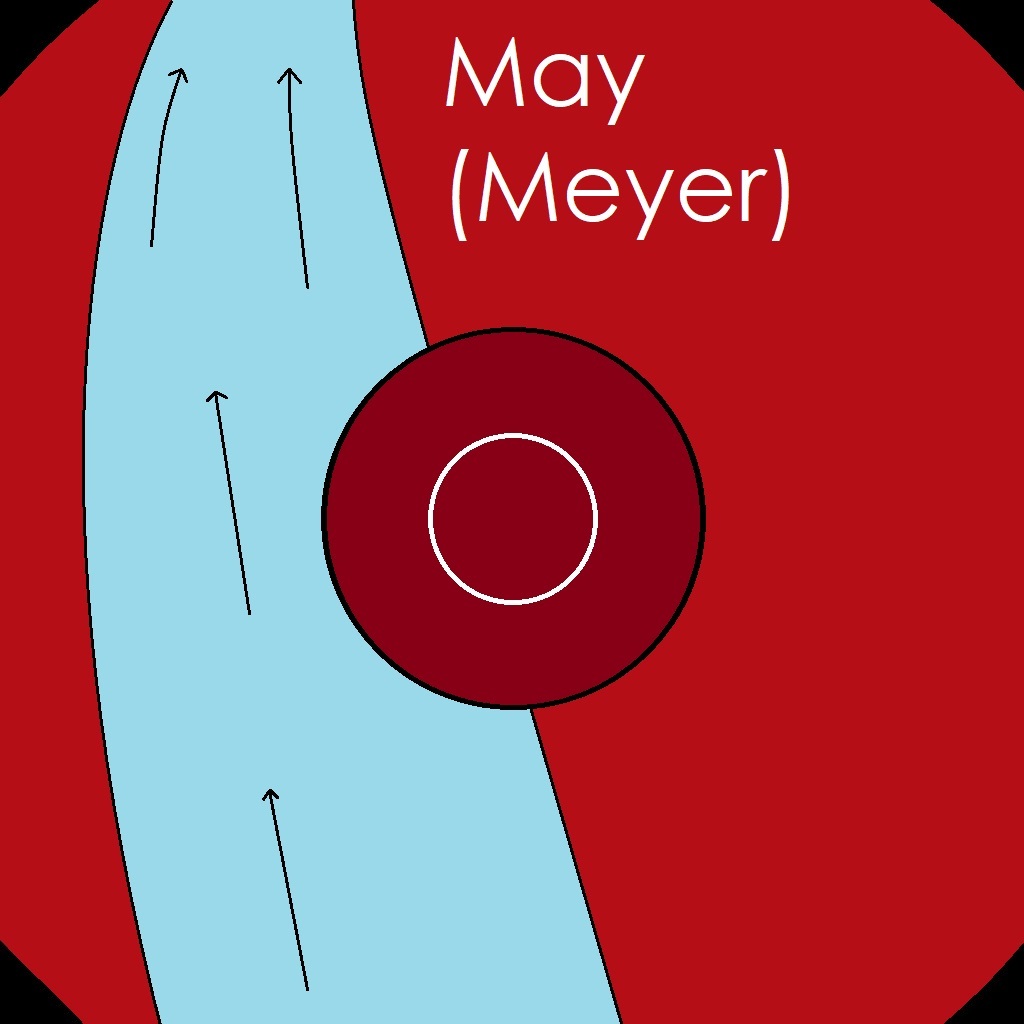 |
 |
 |
 |
 |
 |
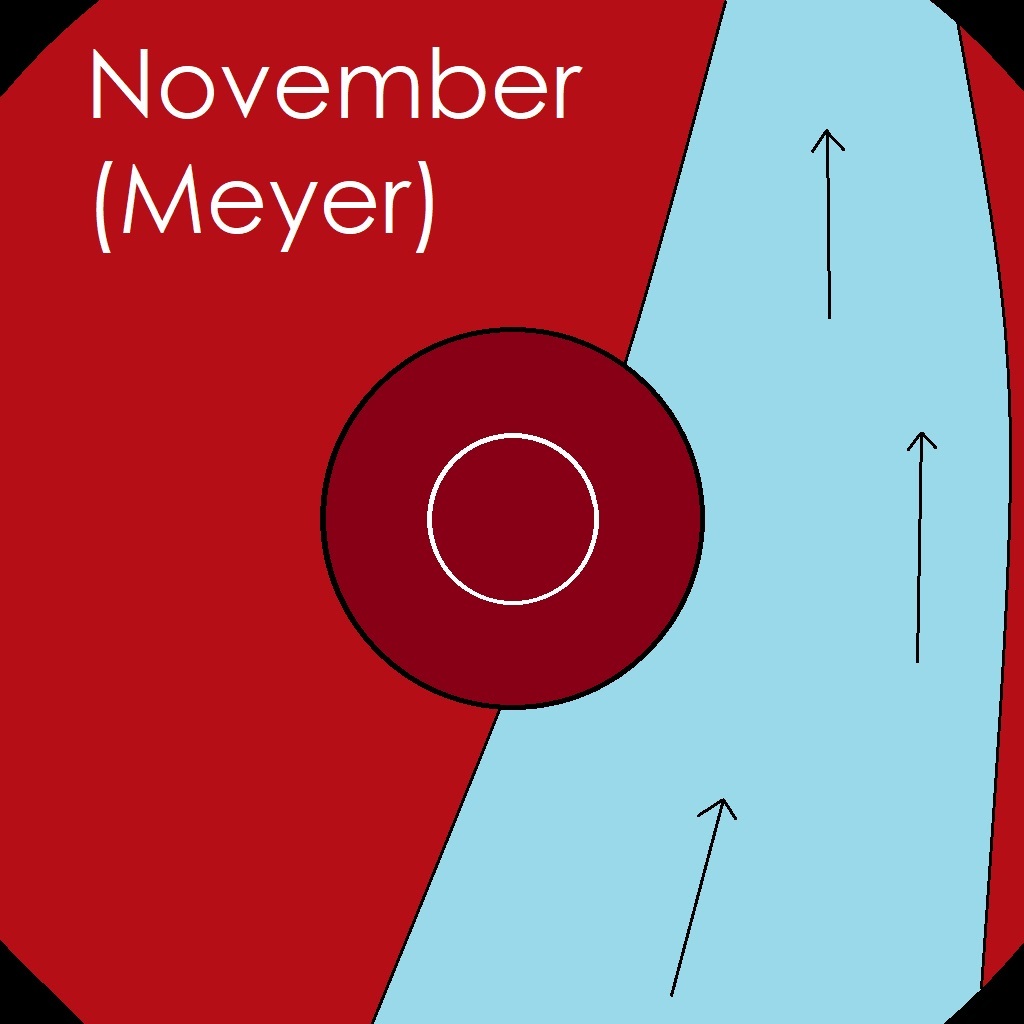 |
 |
LASCO C2 Marsden-group
 |
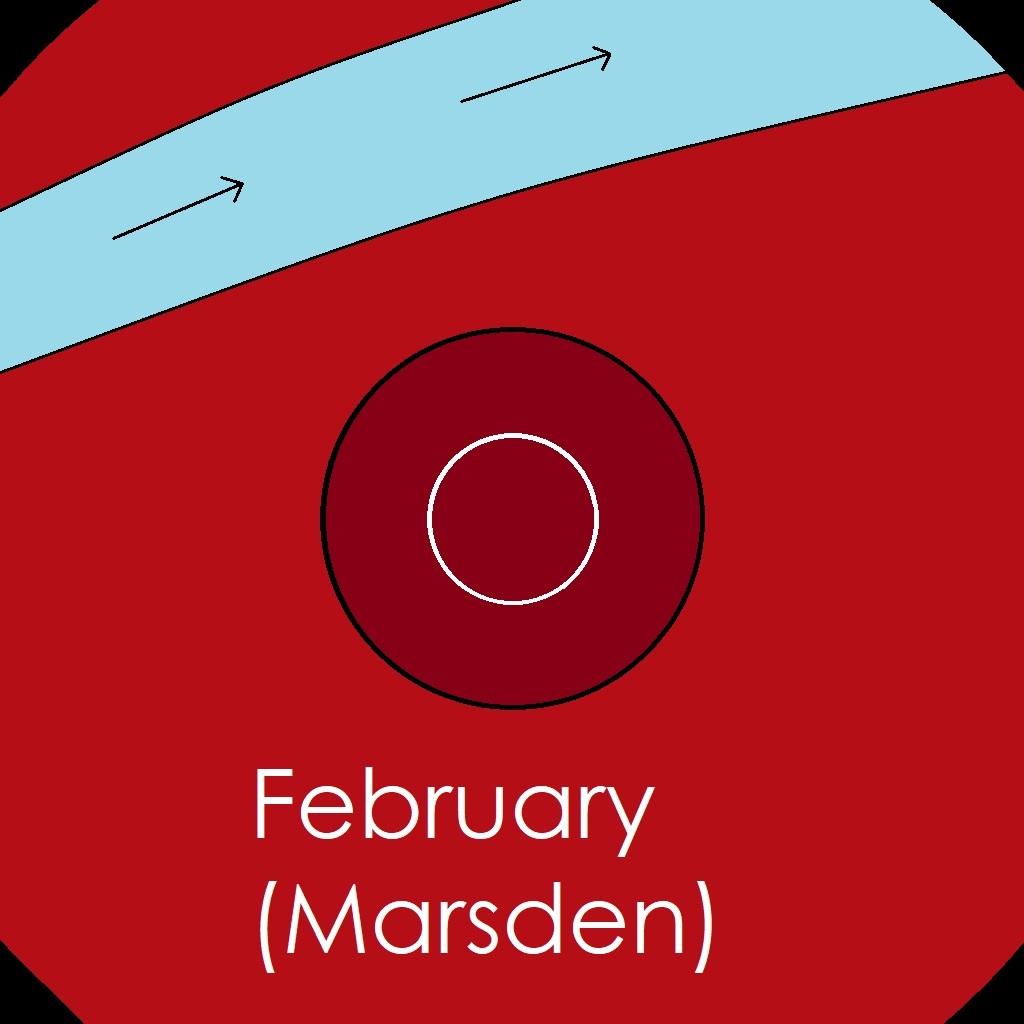 |
 |
 |
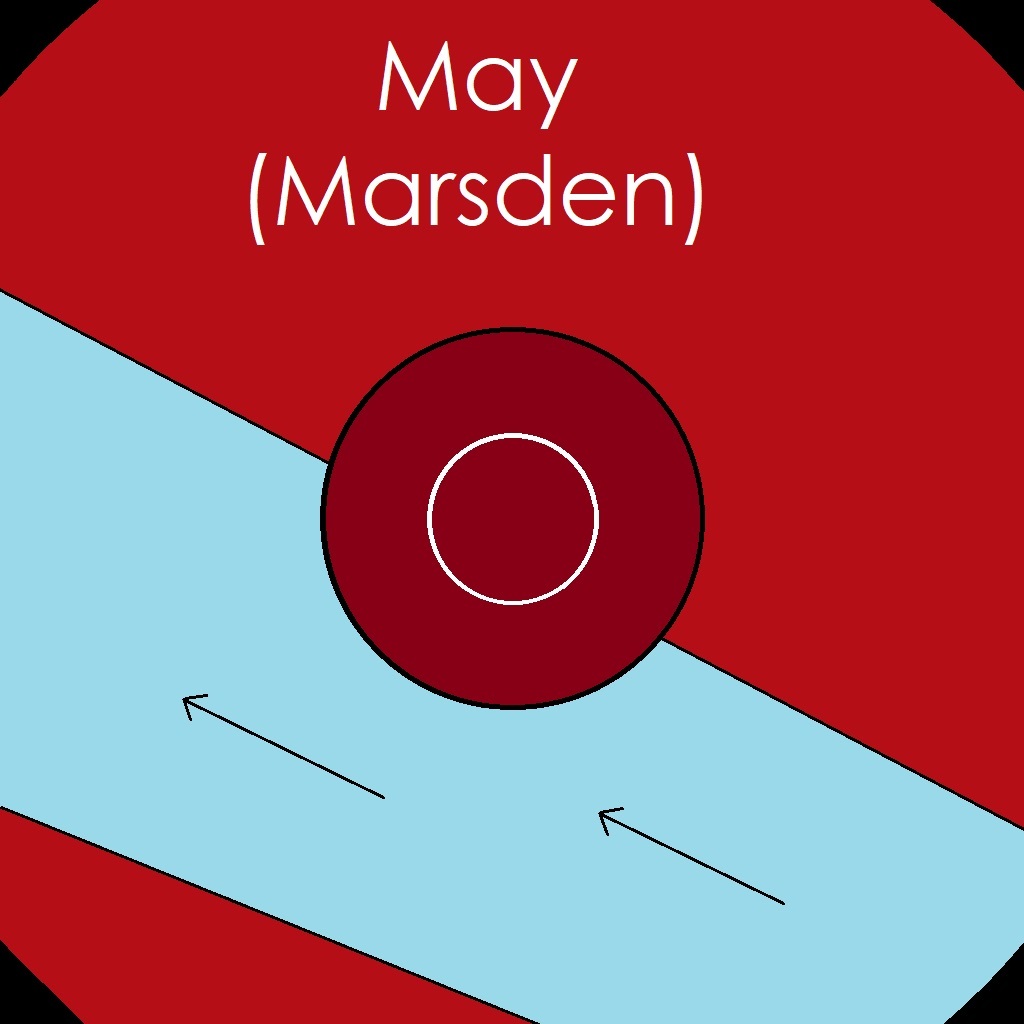 |
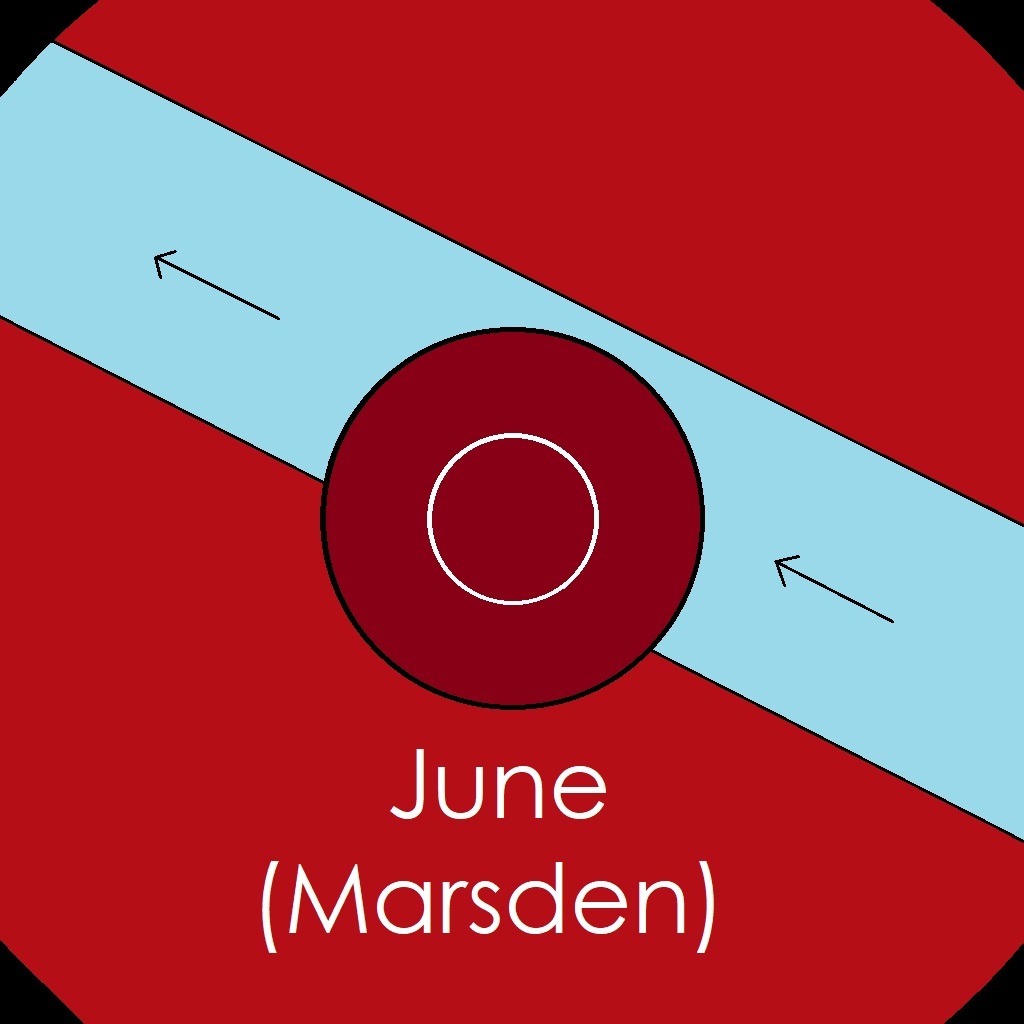 |
 |
 |
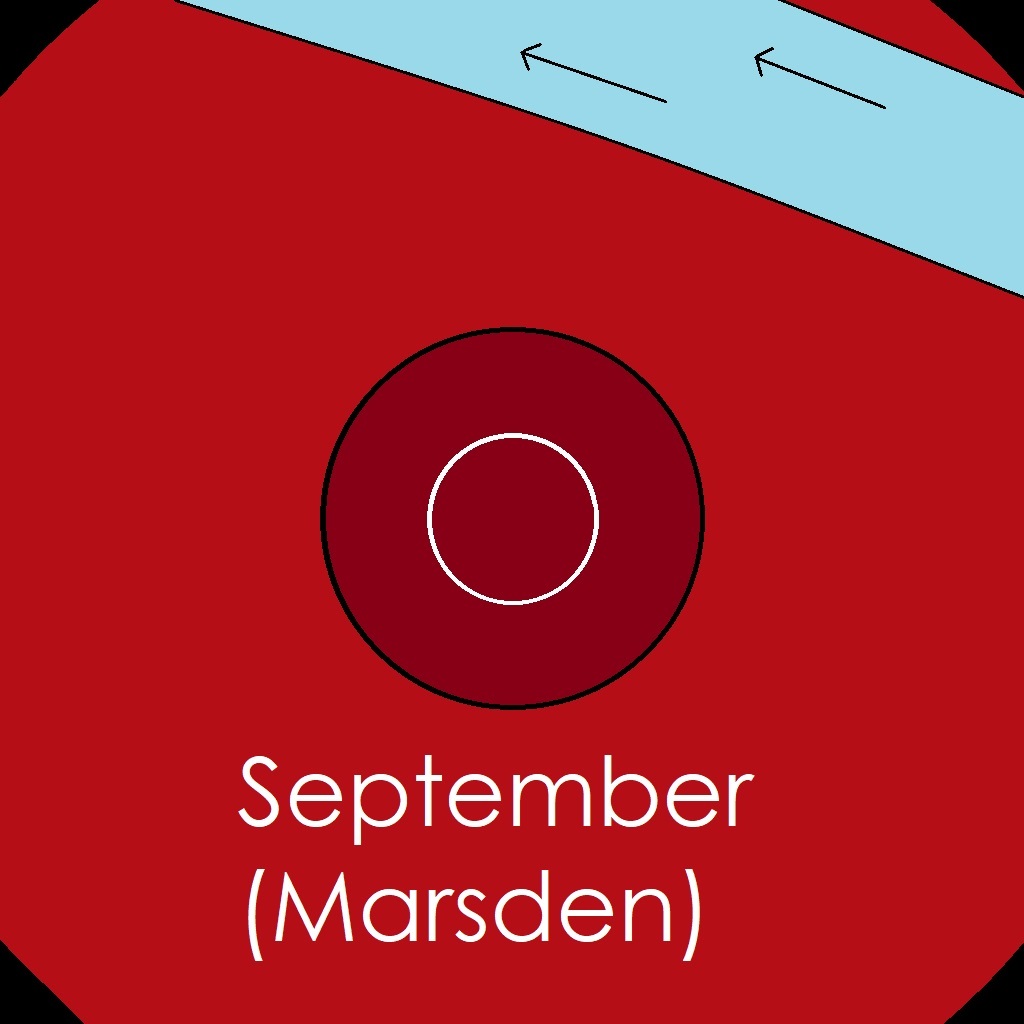 |
 |
 |
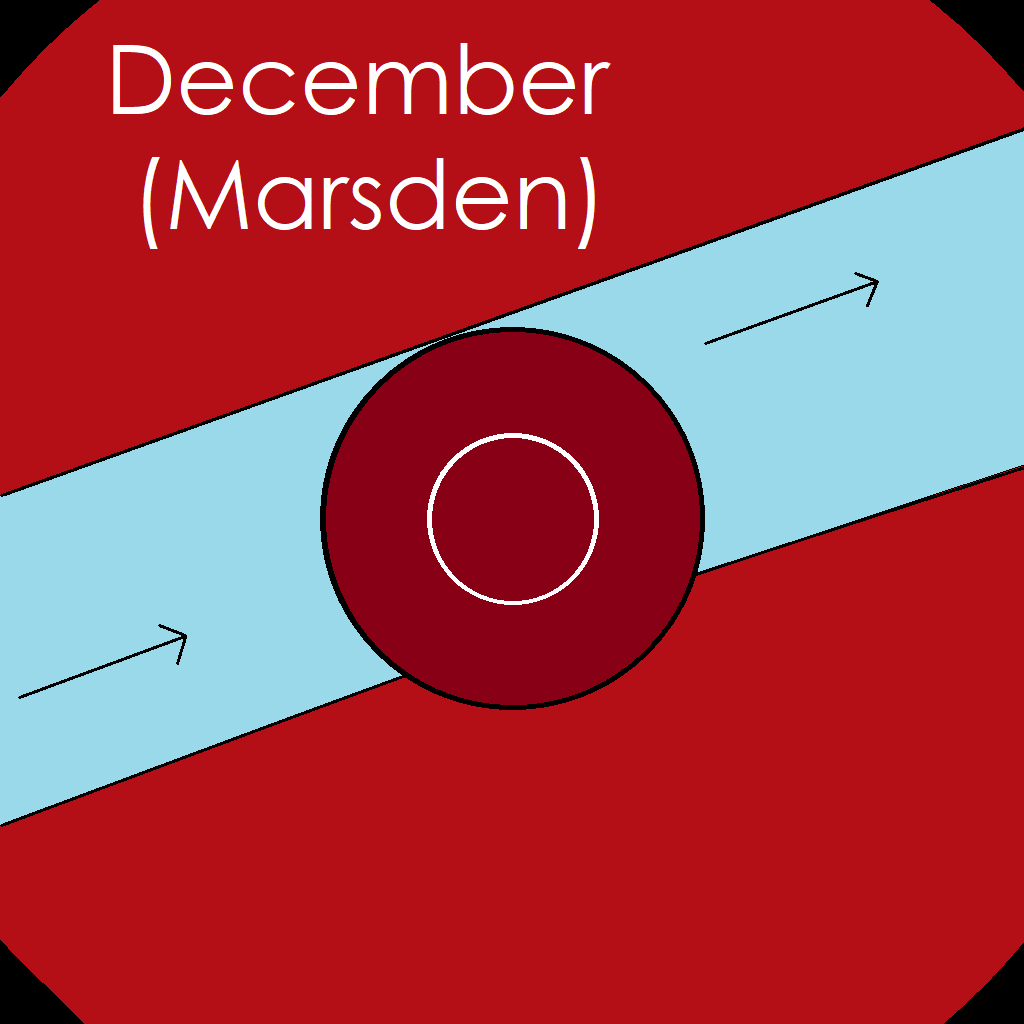 |
LASCO C2 Kracht-group
 |
 |
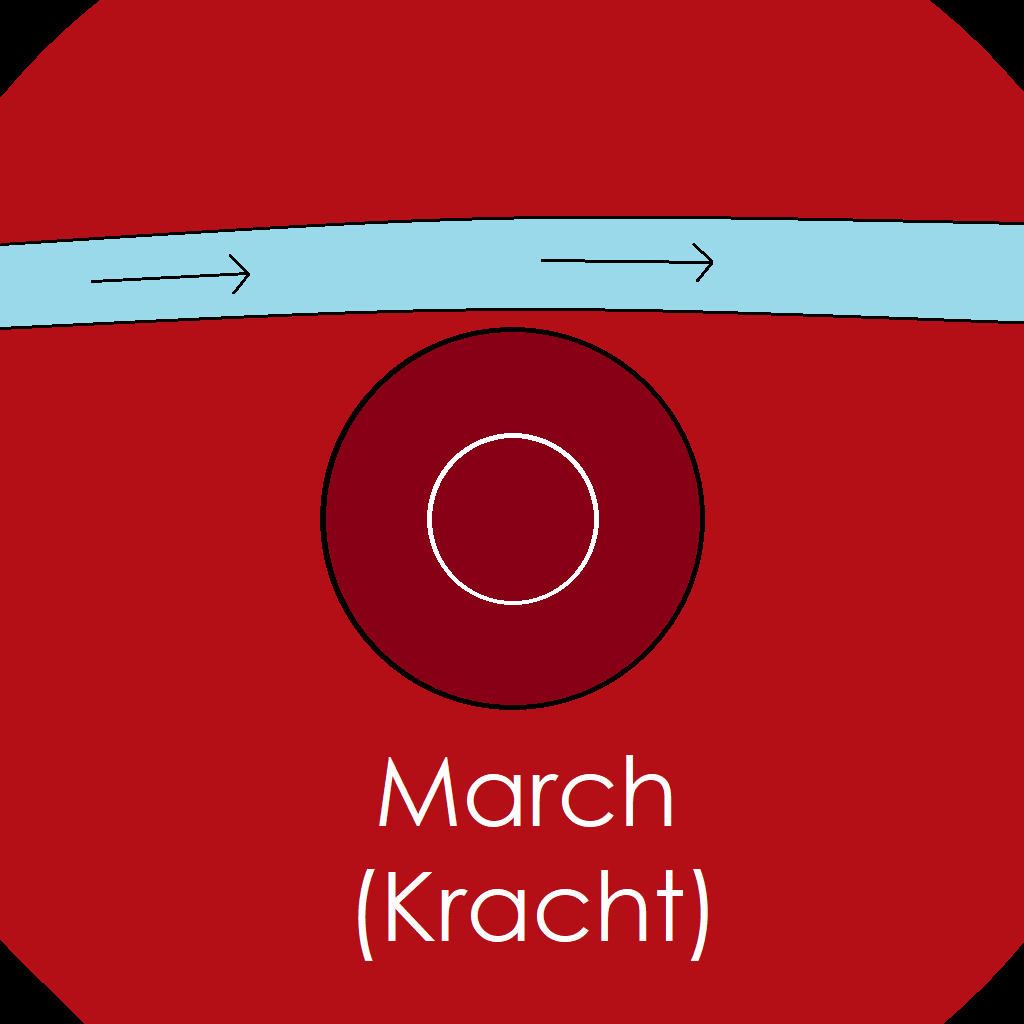 |
 |
 |
 |
 |
 |
 |
 |
 |
 |
LASCO C2 KrachtII-group
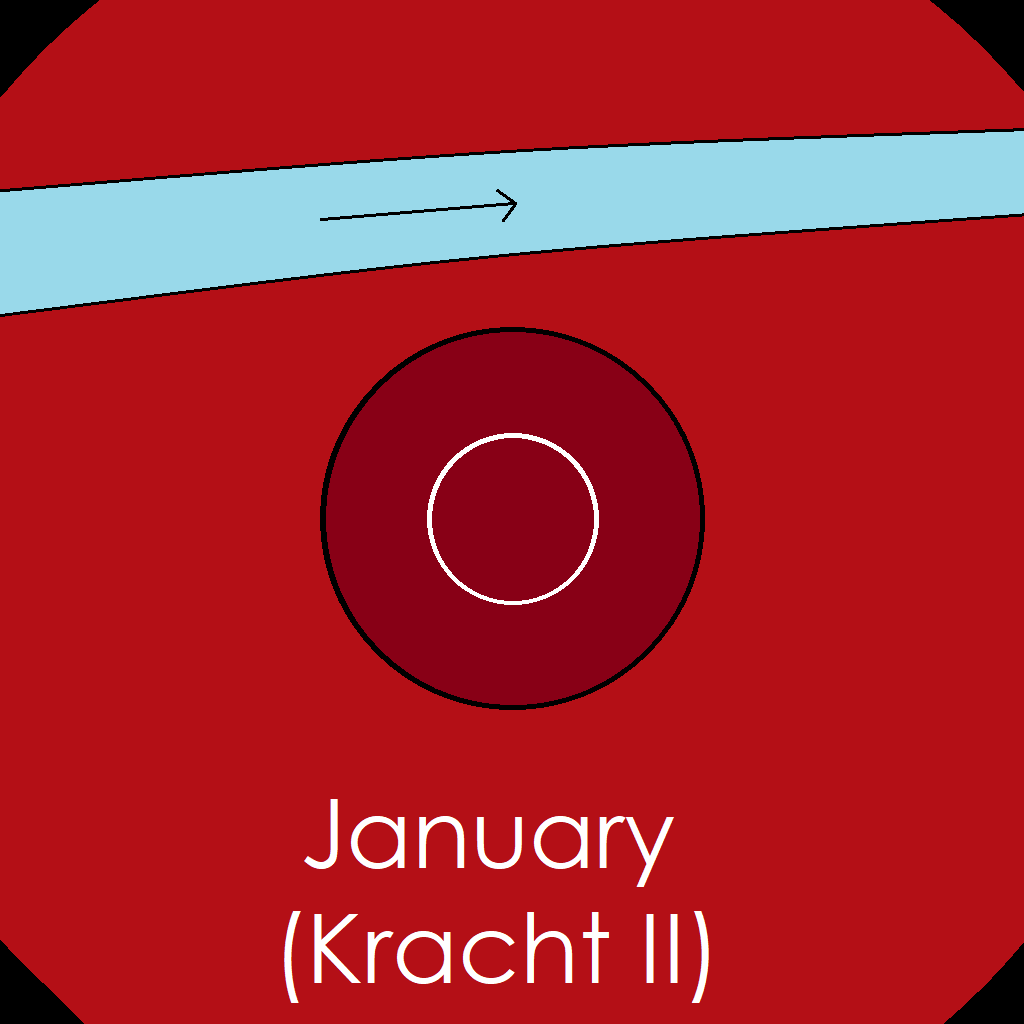 |
 |
 |
 |
 |
 |
 |
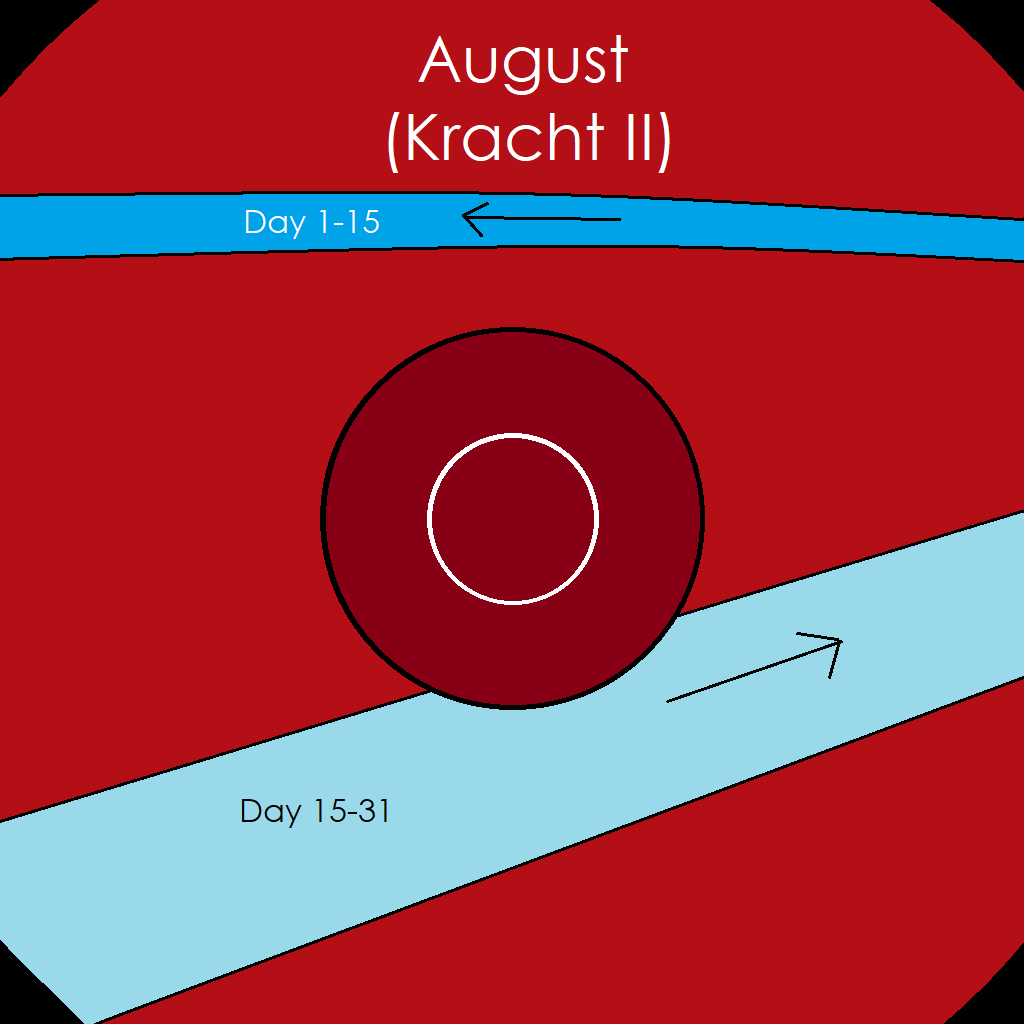 |
 |
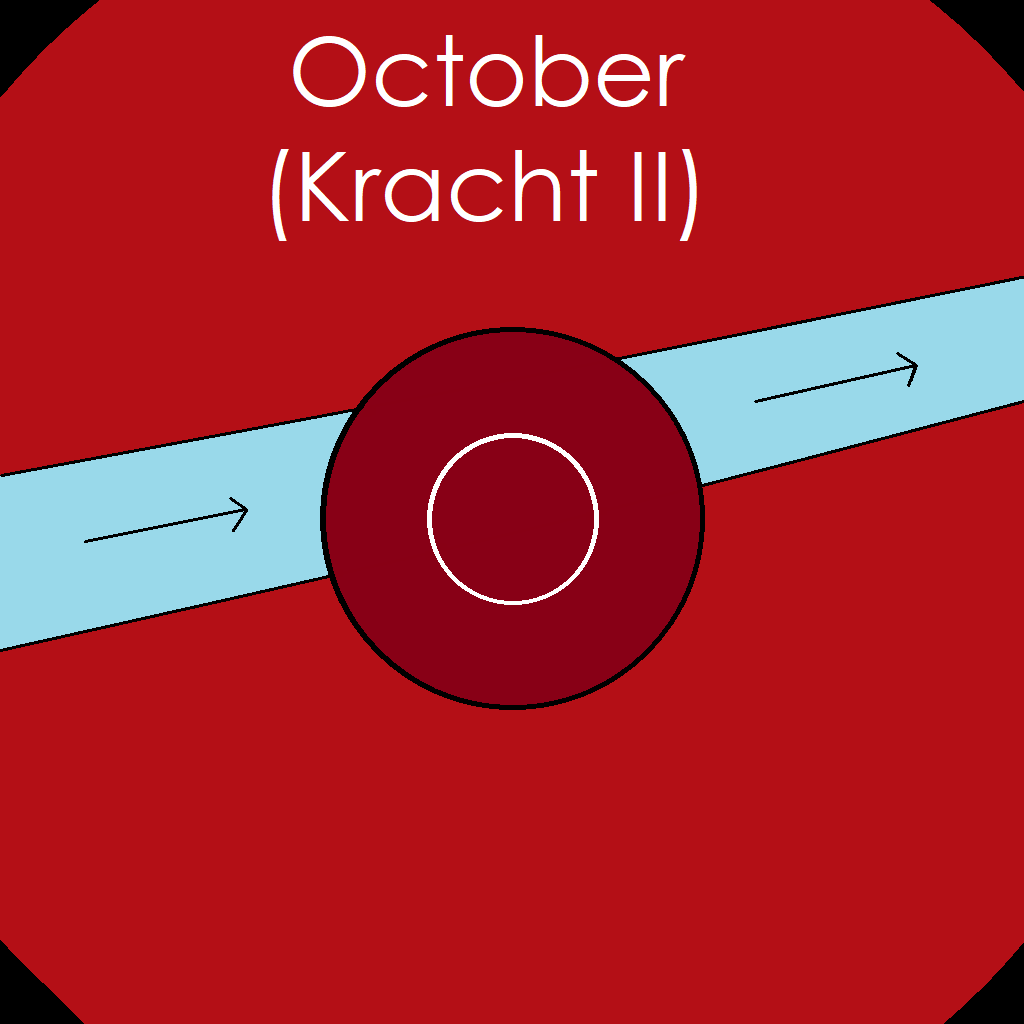 |
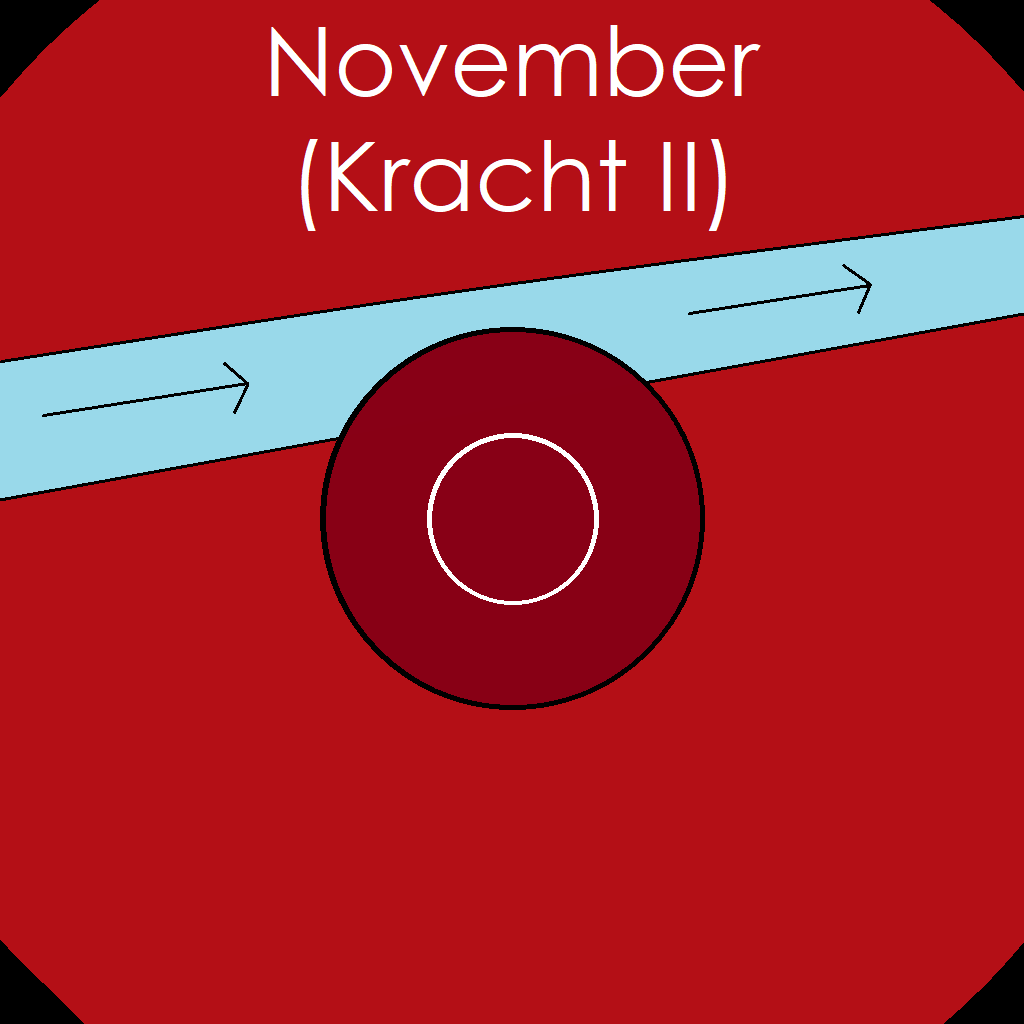 |
 |
Kreutz group comets in the SECCHI Data
Finally, we are also providing the below simulation which shows the orbit of the Kreutz-group comets in the STEREO/SECCHI fields of view. Unlike SOHO, the STEREO-A spacecraft does NOT have an orbit that stays in sync with Earth's orbit; instead, it has a 347-day orbit around the Sun. This means that the Kreutz comets will not be in the same location in the field of view at the same time every year.
This simulation shows the Kreutz-comet trajectory through the COR-2 and HI-1 fields of view from 2015-01-01 through 2023-07-31. As with the SOHO simulations, actual comet locations will be somewhat scattered around this line depending on their individual orbital elements, but all will follow this general trajectory.
We are only providing a Kreutz-group animation because the COR-2 and HI-1 cameras do not see the members of the Meyer, Marsden or Kracht comet groups.
This animation simulates eight years (2015 - 2023), of the Kreutz orbit in combined STEREO/SECCHI COR-2 and HI-1 fields of view. Again, note that we do not observe Kreutz surviving perihelion, so do not seem them on the 'Outbound' portion of the orbit. You can download this movie as a 3.2Mb mp4 file. [Credit: Movie compiled by Brendan Gallagher (NRL).]
